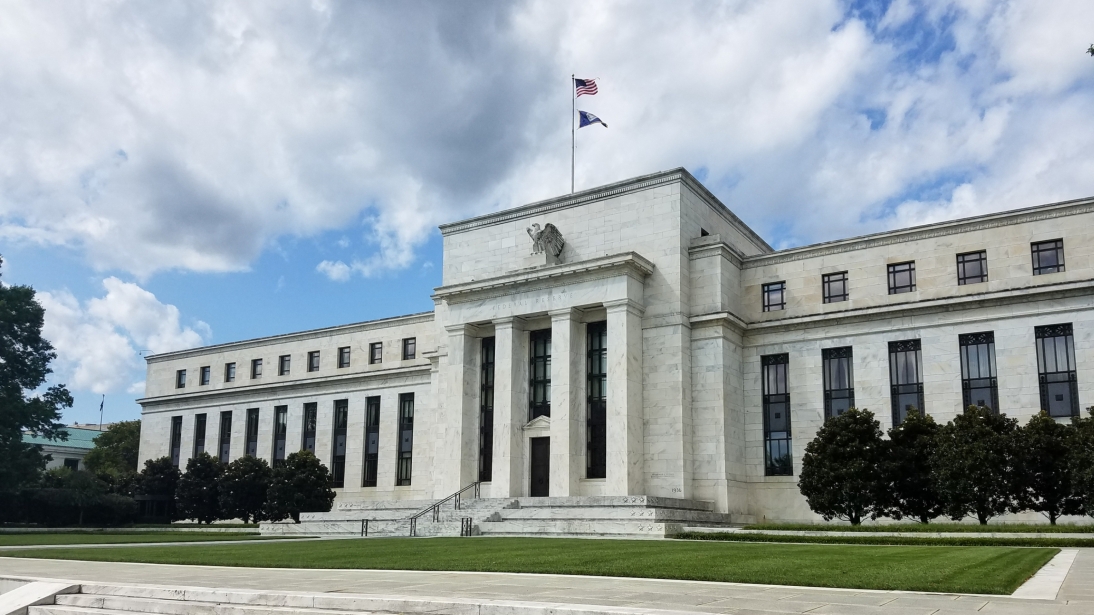For the first time in four years, the United States Federal Reserve (the "Fed") appears set to cut the overnight lending rate on September 18, which would bring some much-needed relief for aspiring homeowners in the United States, according to TD Economics. The U.S. central bank is widely believed to be preparing the first of what is expected to be a series of cuts to the federal funds rate – the interest rate used for overnight interbank lending.
The Fed has a dual mandate of promoting stable prices and maximum employment. Now that there's greater confidence that inflation will hold near the 2% target, the Fed is giving more consideration towards the cooling labour market, to help the economic landing remain a soft one, according to TD Senior Vice President and Chief Economist Beata Caranci.
Caranci said that the rate cut should trigger a series of many more, as much as 250 basis points over 15 months that would bring the overnight rate in the U.S. to 3.00% by the end of 2025.
However, Caranci believes the speed of rate cuts will ultimately be determined by developments in the U.S. job market.
"Any whiff of a rapid deterioration in labour market conditions could usher in a faster rate-cut cycle, with larger step-downs of 50 basis points," she said.
"At the same time, we can't ignore the fact that the American economy has persistently surprised to the upside over the past year, so the risks are not one-sided. We could also end up with more resilience and stickier inflation dynamics, particularly in the service sector where demand tends to linger for longer."
What is leading the Fed to consider cutting interest rates?
While the launch date looks set in stone for that first rate cut, there is no pre-determined path towards the end point, Caranci said.
As an example, Caranci cited the first quarter of this year, when the U.S. central bank was barely willing to entertain rate cuts due to reaccelerating inflation and a job market that defied gravity. The Fed steadily pushed out the timing and scope from three cuts before year-end, to a mere single move in their June Summary of Economic Projections.
But the tables finally turned. Inflation reversed course over the summer, pushing core PCE inflation to a comforting 2.6% year-on-year (y/y). The trend is still their friend, with the three-month annualized pace holding at the 2% level. Even U.S. consumer expectations for inflation have re-anchored to what existed prior to the pandemic, Caranci said.
Not surprising, this is partly related to a rise in the U.S. unemployment rate to 4.2%, which is well off the post-pandemic low of 3.4%. Unlike past business cycles, this lift has been highly influenced by an increase in people entering the labour force instead of job losses and temporary layoffs. However, that gives the Fed time, and not a pass. The Fed must be careful when it comes to firm behaviours, Caranci said.
"Inertia can build on hiring, making it difficult to influence once a downtrend is established."
What would a rate cut mean for U.S. home buyers?
The U.S. housing market has undergone significant changes since the pandemic. What once was an unprecedented level of home affordability in the wake of the crisis, today's market captures a deterioration in affordability to levels not reached in more than 20 years.
"This reflects a combination of tighter supply due to a reluctance for homeowners to list their homes, while new construction has also fallen by the wayside. Both dynamics have been compounded by a high mortgage rate environment, and no region in the U.S. has escaped these forces," Caranci said.
“But the situation is not irreversible. A moderate downward adjustment to interest rates alongside a continued climb in income could restore national affordability to acceptable levels within three years."
What could a cut by the Fed mean for Canada?
"Not a whole lot on the surface, but it would finally sync up the major central banks globally on their monetary cycles," Caranci said.
"This would help to pin down bond yields across the curve and could ease the downside pressure on the Loonie by limiting the rate-spread differential between the Bank of Canada and its U.S. counterpart."
On the future direction of the Bank of Canada, there's less ambiguity, Caranci said. Having already cut three times by 25 basis points, the die has been cast on the path forward. Canada did not have the luxury of waiting for a rate cut because of a domestic economy that narrowly avoided a technical recession in 2023. With households more leveraged and sensitive to interest rates north of the border, there's greater pressure on the Bank of Canada to thread the needle on a soft landing.
TD Economics estimates that the current policy rate is 100 to 200 basis points above what the economy warrants. This means that the BoC, like the Fed, is likely to keep cutting at every meeting, bringing their policy rate to 3.75% by this year-end and likely to 2.50% by end-2025.
